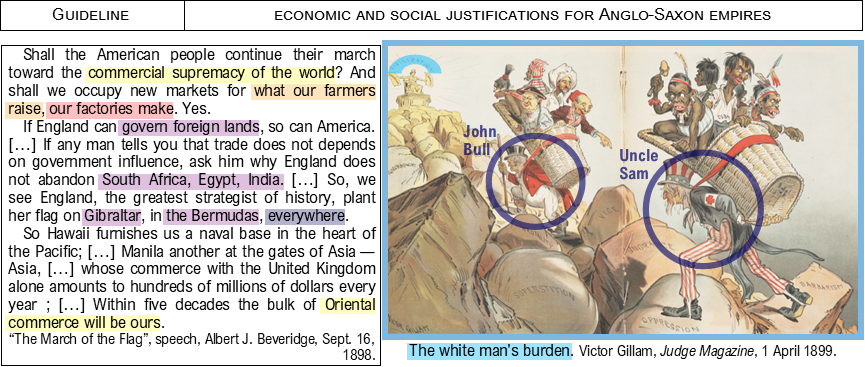![]() The Industrial Age 1815-1914 • • METHOD 2
The Industrial Age 1815-1914 • • METHOD 2

Stage 1 - Introduction: presenting the documents
Similarities: Both documents deal with British & American colonial empires, in the Industrial Age 1815-1914, at the time of the 2nd IR, at the end of the 19th century.
Differences: The 1st document is speech about American expansion by Albert J. Beveridge delivered on Sept. 16, 1898. The 2nd document is a cartoon, an engraving showing the white man's burden by Victor Gillam & published in Judge magazine on 1 April 1899.
Give structure: In a 1st part I’ll describe the economic reason for colonisation with the speech & in a 2nd part I’ll focus on the social reason using the engraving.
Stage 2 - Analysing the documents
| DESCRIBING - What you see (docs) |
EXPLAINING - What you know (notions) |
| 1. Economic reason with speech |
|
|
P1: US goal. trade dominance to get new markets. |
- |
| 2.Social reason with engraving |
|
Foreground: characters. John Bull & Uncle Sam carrying native peoples representing their colonies (India or Cuba) climbing... |
|
Stage 3 - Concluding
Assess docs: To conclude, both documents are reliable as we have their full references and they are biased as they both promote colonisation, show the coloniser point of view.
Sum-up ideas: These docs give the economic & social justifications for the expansion of the British empire and the birth of the US empire.
Open: We may wonder where the British emigrated: the USA or their empire?